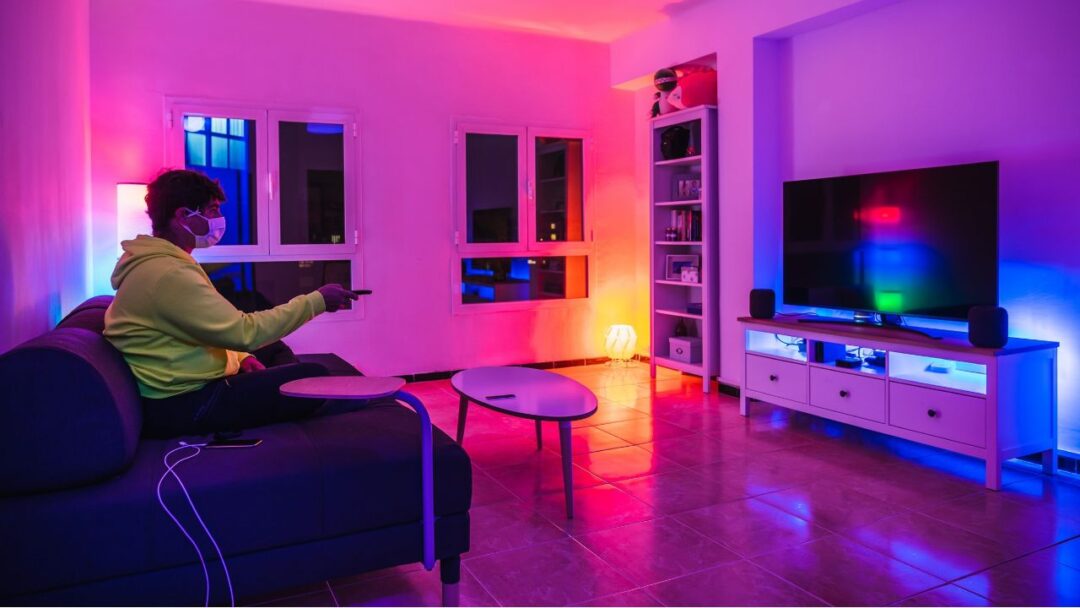Table of Contents

In a world where technological advancements seem boundless, one innovation is quietly reshaping our digital experience: backlight-free display technology. This cutting-edge development eliminates the need for traditional backlighting, offering a host of benefits that go beyond just visual appeal.
Understanding Backlight-Free Display Technology
What Sets it Apart?
Traditional displays rely on backlighting to illuminate pixels, ensuring a vibrant and clear image. However, the introduction of backlight-free technology takes a different approach. By utilizing self-emitting pixels, this technology provides a more energy-efficient and visually striking display.
The Magic of Self-Emitting Pixels
Imagine a display that can emit its light, pixel by pixel. This is the magic behind backlight-free technology. Each pixel becomes a source of light, resulting in deeper blacks, higher contrast ratios, and an overall enhanced viewing experience.
Advantages of Backlight-Free Displays
1. Energy Efficiency
One of the standout features of this technology is its energy efficiency. Unlike traditional displays that require constant backlighting, backlight-free displays only consume power when individual pixels are active. This not only reduces energy consumption but also extends the lifespan of the display.
2. Improved Contrast Ratios
The self-emitting pixels contribute to unparalleled contrast ratios. Blacks are truly black, creating a more lifelike and immersive visual experience. Whether you’re watching a movie or editing photos, the improved contrast adds a new dimension to your digital content.
3. Thinner and Lighter Screens
Say goodbye to bulky screens. Backlight-free displays allow for slimmer and lighter devices without compromising on visual quality. This is a game-changer for industries where portability and sleek design are paramount.
Applications Across Industries
1. Entertainment
In the realm of entertainment, backlight-free displays are transforming the way we consume content. Imagine watching a movie with colors that pop and blacks that are truly dark—creating an experience that draws you into the story.
2. Healthcare
In healthcare, where precision is crucial, these displays are becoming standard in diagnostic equipment. The enhanced clarity ensures accurate readings, contributing to better patient outcomes.
3. Gaming
Gamers rejoice! Backlight-free displays bring games to life with vibrant colors and sharp details. The improved response time and clarity make every gaming session an immersive adventure.
Overcoming Challenges
While backlight-free technology offers a plethora of advantages, it’s essential to address challenges such as cost and production scalability. As with any innovation, widespread adoption hinges on overcoming these hurdles, but the potential benefits make it a journey worth undertaking.
Backlight-free display technologies, also known as emissive display technologies, do not require a separate light source like traditional LCDs. Instead, each pixel emits its own light. As of my last knowledge update in January 2022, there are several types of backlight-free display technologies available, and new developments may have occurred since then. Here are some examples:
- OLED (Organic Light-Emitting Diode):
- OLED displays are known for their vibrant colors and high contrast ratios. Each pixel in an OLED display emits its own light, allowing for deep blacks and better energy efficiency compared to traditional LCDs.
- MicroLED:
- MicroLED is a technology that uses tiny, individual LEDs for each pixel. Like OLED, it is an emissive display technology, but instead of organic materials, it uses inorganic materials. MicroLED displays offer excellent brightness, contrast, and color reproduction.
- AMOLED (Active Matrix Organic Light-Emitting Diode):
- AMOLED is a variation of OLED technology. It uses an active matrix to control each individual pixel, providing faster response times and better image quality. AMOLED displays are commonly found in smartphones, smartwatches, and some TVs.
- E-Ink (Electronic Ink):
- E-Ink is a reflective display technology commonly used in e-readers. Unlike traditional displays, E-Ink reflects ambient light rather than emitting its own. This makes E-Ink displays easier on the eyes and more power-efficient, but they are generally limited to black and white or grayscale.
- QLED (Quantum Dot LED):
- While QLED displays do use a backlight, they are worth mentioning as they incorporate quantum dot technology to enhance color accuracy and brightness. The quantum dots emit specific colors when exposed to light, resulting in improved color reproduction.
- Plasma Display:
- Plasma displays were popular for large-screen TVs. Each pixel in a plasma display emits ultraviolet light, which then interacts with phosphors to produce visible light. However, plasma displays have become less common due to the rise of other technologies.
- SED (Surface-conduction Electron-emitter Display):
- SED was a technology that aimed to combine the best features of CRT and flat-panel displays. It used electron emitters for each pixel, providing a bright and high-contrast display. However, SED displays faced challenges and have not become mainstream.
The Future of Displays
In conclusion, the advent of backlight-free display technology marks a significant milestone in the evolution of visual experiences. From energy efficiency to enhanced visuals, this innovation is set to redefine how we interact with digital content. As industries continue to embrace this technology, we can anticipate a future where displays are not just devices but gateways to unparalleled sensory delight.
Embrace the future, where backlight-free displays pave the way for a visual revolution, promising a world of clarity, energy efficiency, and breathtaking visuals.
Unveiling the Brilliance: Samsung Display’s Cutting-Edge Technology: NEXT POST




Pingback: Fueling The Future: How Crude Oil Prices Impact Your Everyday Life | Animal TV Hindi